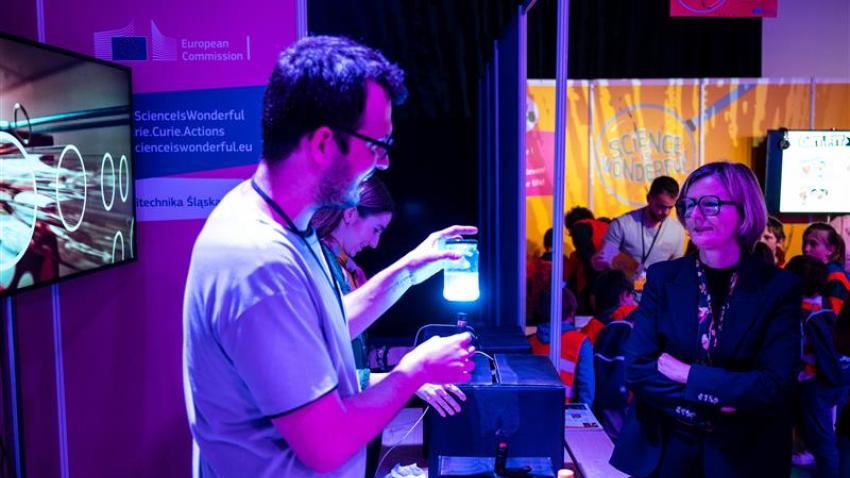‘Science is Wonderful!’ comes to Poland
The European Commission is joining forces with this year’s Science Picnic (Piknik Naukowy) in Warsaw.
The Marie Skłodowska-Curie Actions (MSCA) are proud to contribute 3 outstanding projects to this science celebration under the banner of its science outreach initiative Science is Wonderful!
Find your Mars tyre
The RED 4 MARS project develops high-performance rubber materials for Mars rovers.
This is easier said than done, considering how Martian nights can be a chilling -133°C. So, the rubber needs to be extremely robust while remaining flexible.
And the cherry on top?
The team is also looking at how resources on Mars could be used and recycled to create new forms of rubber.
During the science fair, Rafał Anyszka, Norbert Nizel and Jakub Wrȩczycki will allow visitors to test the strength and durability of different rubbers using dry ice and take them on a small journey to Mars.
Glowing objects around us
How medicines are made
Scientists recently discovered “biological rust” or ferroptosis.
This iron-dependent cell death spreads like rust and is connected to neurodegenerative diseases like Alzheimer’s and Parkinson’s.
The NeuroFerro project aims to develop compounds acting as rust-proof paint for cells while also identifying potent ferroptosis inhibitors to avoid the “rust” from taking hold.
During the science fair, Greta Klejborowska will explain how new medicines are made, taking visitors on an interdisciplinary exploration.
We look forward to seeing you at Science Picnic 2025!
Last updated:




